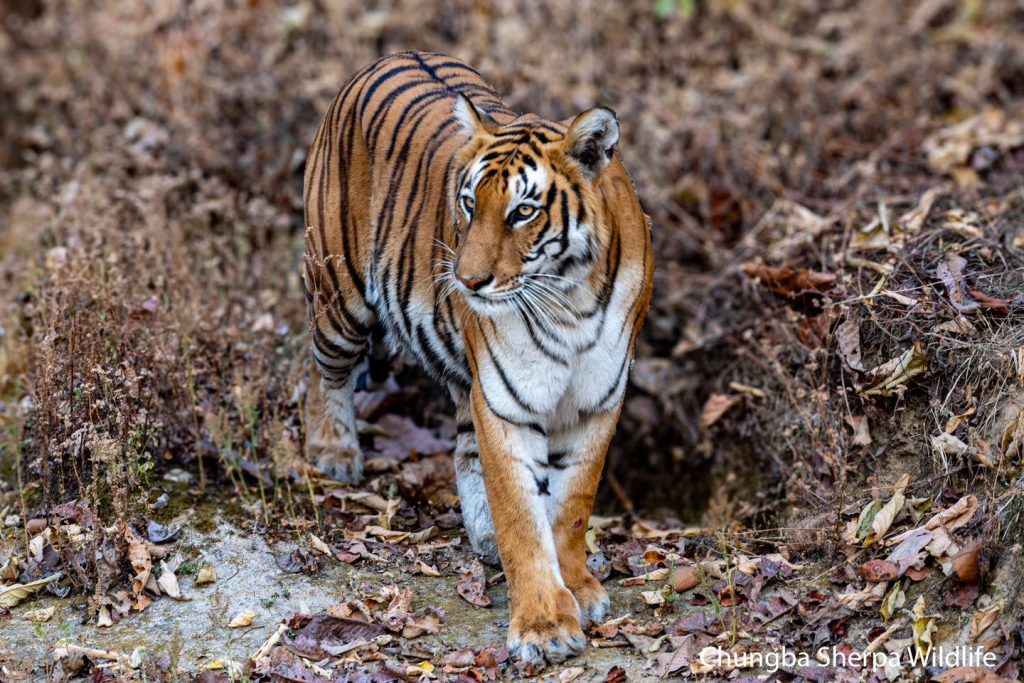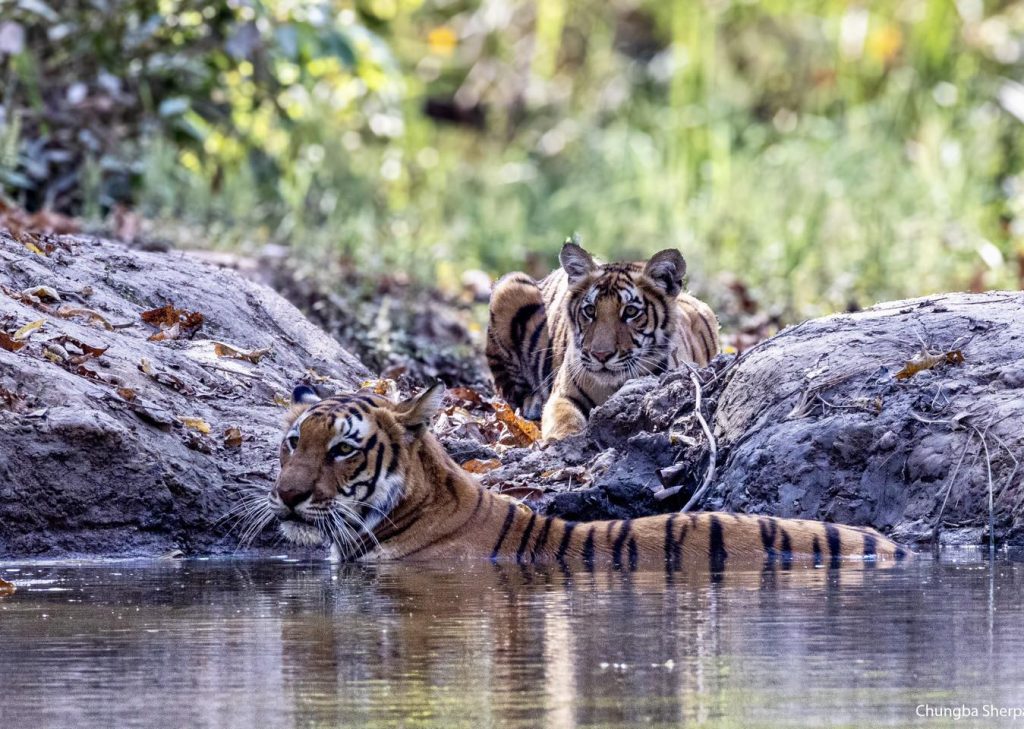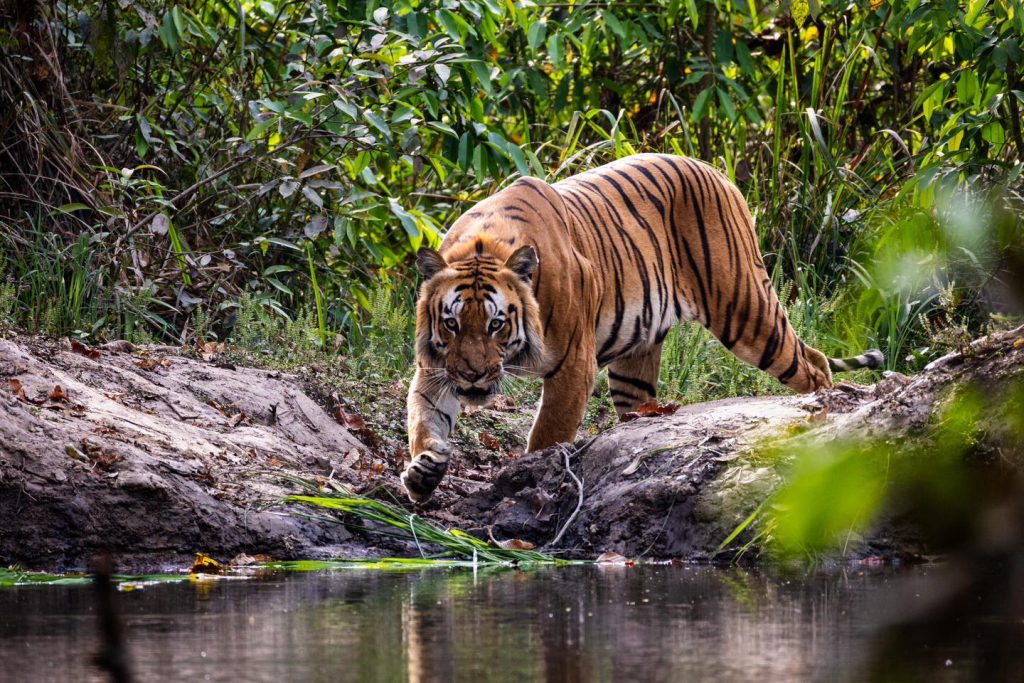
Nepal has succeeded in fulfilling its international commitment to double its tiger population within a decade. During the first Global Tiger Summit at St. Petersburg, Russia, Nepal pledged to double its tiger population. In the last century, the tiger’s habitat range has shrunk by 93%, with its global population reduced to about 3,200 individuals across 13 range countries in 2010. Habitat loss and degradation, poaching and illegal trade of body parts, and human-tiger conflict were the major reasons for the decline.
From 121 tigers in 2010, Nepal is now home to 355 Royal Bengal tigers, according to the 2022 Tiger Survey. To achieve this conservation milestone, Nepal collaborated with various government agencies, conservation partners, organizations, international partners, security forces, local communities, and celebrities. Nepal declared Banke National Park in 2010, which is now home to 25 tigers and expanded Parsa National Park from 509 to 637 square kilometres. This has transformed its ecosystem, with tiger numbers surging from four to 41 in just over a decade. These protected areas helped secure core breeding habitat. Since tiger surveys are conducted every four years, the next national survey will take place in 2026 as per “Tiger and Prey Base Monitoring Protocol, 2017.”

Habitat restoration, grassland management, construction of ponds and waterholes, habitat improvement, and community awareness programs have all contributed to this success. At a policy level, the formation of the National Tiger Conservation Committee, chaired by the Prime Minister in 2010 (2067 BS), and the establishment of the Central Wildlife Crime Control Bureau—later expanded to district levels—have been effective in curbing wildlife crimes. Community-based Anti-poaching Units (CBAPUs) and regular patrolling by the Nepali Army, forest guards, and other security forces have further strengthened conservation efforts. This shows that tiger conservation is a national priority.
Tigers are a flagship species that inhabits a wide range of interconnected habitats, the conservation of which ensures ecosystem health. The conservation of tigers is also linked with the local livelihoods. In tiger-bearing core areas like Chitwan and Bardiya, tiger-based tourism generates income and inspires stewardship among communities. Locals now see the tiger not as a threat but as an asset that brings prosperity through tourism and pride through conservation. For me, “Where there are tigers, there will be tourists—where there are tourists, there will be livelihoods.” This harmony between ecology and economy is of the essence of Nepal’s conservation diplomacy.

Despite the success, new questions emerge: What comes after the numbers rise?
An increase in tiger populations naturally brings a rise in human-tiger encounters or conflicts. Yet data show that conflict-related incidents have been declining in recent years. Human deaths have dropped from 21 in fiscal year 2021-22 to seven in 2024-25. Most fatal encounters occurred inside forests due to a lack of precaution. The government has adopted the conservation education program, teaching the locals to travel in groups inside the forest, seek permission, and understand tiger behaviour, which has drastically reduced risks in recent years.
However, the public opinion on the tiger population is different. Some argue that the parks are reaching capacity, while others believe there is still room for population growth. According to the Tiger Conservation Action Plan (2016–2020), of 93 listed activities, only 10 were fully implemented, 51 were partially implemented, and 34 were never initiated. Yet, Nepal still managed to reach 355 tigers. Had more activities been fully executed, the population could have been even higher.

A Previous study in Chitwan showed that only about 5% of tigers in protected areas are ever involved in conflicts. These conflict-prone tigers are usually older or injured. To address the issue of conflict, Nepal is now focusing on identifying and safely managing such tigers before conflicts occur. Managing biological corridors is a key part of conservation. These forested pathways connecting tiger habitats across the Tarai Arc Landscape (TAL) are essential for genetic diversity and species migration. Their protection will define the next decade of conservation success in Nepal’s context. Growing efforts in conservation education now focus on shifting from saving tigers to living with them in harmony without harming their natural habitat.
The Royal Bengal Tiger is listed as “Endangered” under the IUCN Red List of Threatened Species and is protected under CITES Appendix I. It is also listed in Schedule I of Nepal’s National Parks and Wildlife Conservation Act, 1973. Nepal is the first country in the world to earn worldwide recognition in tiger conservation. It is also now discussing ways to manage conflict tigers, either by establishing a tiger sanctuary or through other approaches.
Nepal has earned international acclaim for its tiger conservation efforts. The future now lies in ensuring coexistence, conflict mitigation and livelihood improvement.
A new discussion is emerging about how to manage problematic tigers. Some experts suggest creating a dedicated tiger sanctuary, while others propose that Nepal could begin a form of “tiger diplomacy”. Offering surplus tigers as symbolic gifts to foreign nations would strengthen diplomatic ties. This could help to bolster conservation partnerships, bring technical expertise and generate economic opportunities.